
by Julie McConnell | Jan 17, 2017

Winter flowers and small leaves with serrated edges lead to identification as Camellia sasanqua. Photo: J_McConnell, UF/IFAS
A common diagnostic service offered at your local UF/IFAS Extension office is plant identification. Whether you need a persistent weed identified so you can implement a management program or you need to identify an ornamental plant and get care recommendations, we can help!
In the past, we were reliant on people to bring a sample to the office or schedule a site visit, neither of which is very practical in today’s busy world. With the recent widespread availability of digital photography, even the least technology savvy person can usually email photos themselves or they have a friend or family member who can assist.
If you need to send pictures to a volunteer or extension agent it’s important that you are able to capture the features that are key to proper identification. Here are some guidelines you can use to ensure you gather the information we need to help you.
Entire plant – seeing the size, shape, and growth habit (upright, trailing, vining, etc.) is a great place to begin. This will help us eliminate whole categories of plants and know where to start.
Stems/trunks – to many observers stems all look the same, but to someone familiar with plant anatomy telltale features such as raised lenticels, thorns, wings, or exfoliating bark can be very useful. Even if it doesn’t look unique to you, please be sure to send a picture of stems and the trunk.
Leaves – leaf color, size and shape is important, but also how the leaves are attached to the stem is a critical identification feature. There are many plants that have ½ inch long dark green leaves, but the way they are arranged, leaf margin (edges), and vein patterns are all used to confirm identification. Take several leaf photos including at least one with some type of item for scale such as a small ruler or a common object like a coin or ballpoint pen; this helps us determine size. Take a picture that shows how leaves are attached to stems – being able to see if leaves are in pairs, staggered, or whorled around a stem is also important. Flip the leaf over and take a picture of the underside, some plants have distinctive veins or hairs on the bottom surface that may not be visible in a picture taken from above.
Flowers – if flowers are present, include overall picture so the viewer can see where it is located within the plant canopy along with a picture close enough to show structure.
Fruit – fruit are also good identification pictures and these should accompany something for scale to help estimate size.
Any additional information you are able to provide can help – if the plant is not flowering but you remember that it has white, fragrant flowers in June, make sure to include that in your description.
Learning what plants you have in your landscape will help you use your time and resources more efficiently in caring for you yard. Contact your local UF/IFAS Extension office to find out who to send requests for plant id.
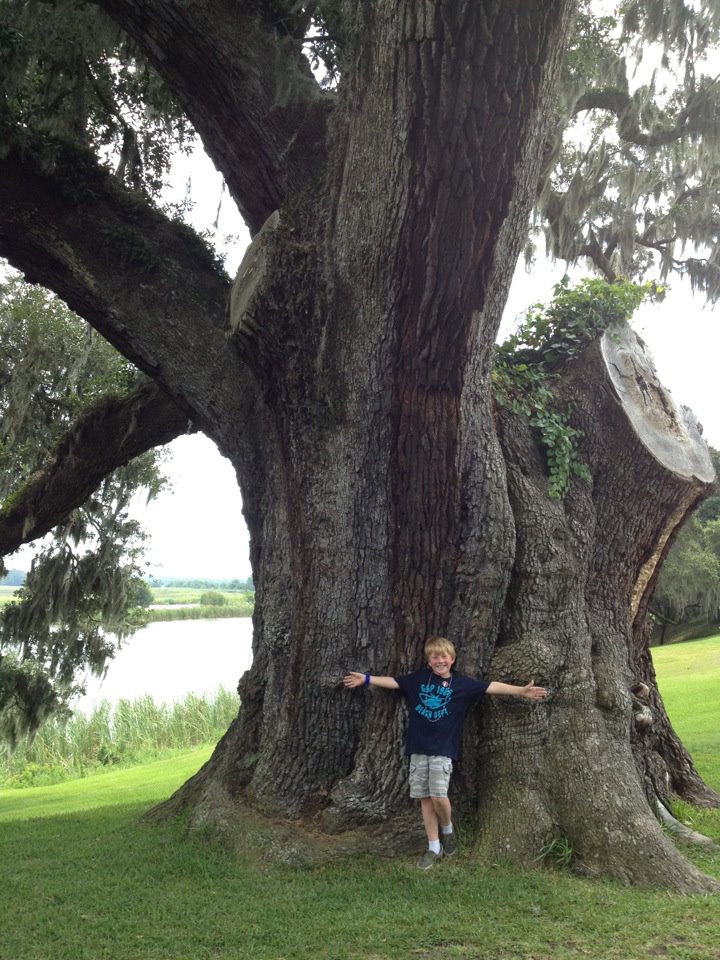
by Carrie Stevenson | Jan 17, 2017
Arbor Day has a 145-year history, started in Nebraska by a nature-loving newspaper editor named J. Sterling Morton who recognized the many valuable services trees provide. The first Arbor Day was such a big success that Mr. Morton’s idea quickly spread nationwide–particularly with children planting trees on school grounds and caring for them throughout the year. Now, Arbor Day is celebrated around the world in more than 30 countries, including every continent but Antarctica. We humans often form emotional attachments to trees, planting them at the beginning of a marriage, birth of a child, or death of a loved one. Trees have tremendous symbolic value within cultures and religions worldwide, so it only makes sense that people around the world have embraced the idea of celebrating a holiday focused solely on trees.
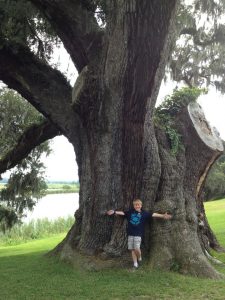
Ancient trees like this live oak have an important place in our cultural history. Photo credit: Carrie Stevenson
In addition to their aesthetic beauty and valuable shade in the hot summers, trees provide countless benefits: wood and paper products, nut and fruit production, wildlife habitat, stormwater uptake, soil stabilization, carbon dioxide intake, and oxygen production. New research is even showing that trees can communicate throughout a forest, sharing “information” and nutrients through a deeply connected network of roots and fungi that can increase the resiliency of an entire forest population. And if you’re curious of the actual dollar value of a single tree, the handy online calculator at TreeBenefits.com can give you an approximate lifetime value of a one growing in your own backyard.
While national Arbor Day is held the last Friday in April, Arbor Day in Florida is always the third Friday of January. Due to our geographical location further south than most of the country, our primary planting season is during our relatively mild winters. Trees have the opportunity during cooler months to establish roots without the high demands of the warm growing season in spring and summer.
To commemorate Arbor Day, many local communities will host tree giveaways, plantings, and public ceremonies. In the western Panhandle, the Florida Forest Service, UF/IFAS Extension, and local municipalities have partnered for several events, listed here. As the Chinese proverb goes, “The best time to plant a tree was twenty years ago. The second best time is now.”
For more information on local Arbor Day events and tree giveaways in your area, contact your local Extension Office or County Forester!
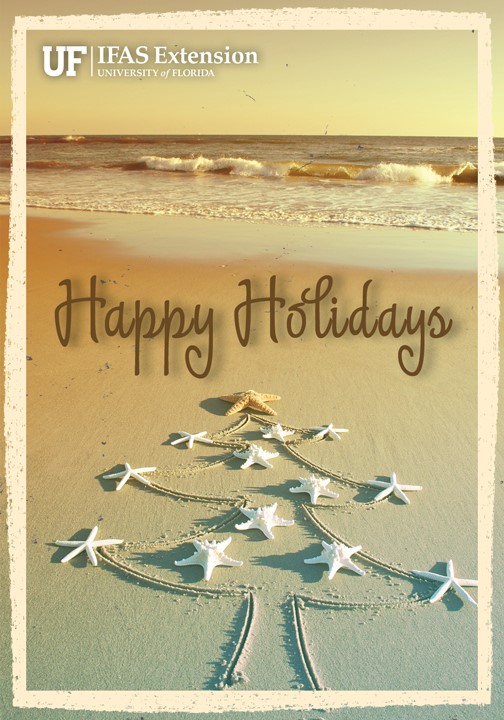
by Ray Bodrey | Dec 22, 2016
Although there are many types of artificial Christmas trees these days, live or cut trees are still very popular. Given the proper care, your natural tree can maintain its festive look throughout the holidays, keeping your safety in mind as well.
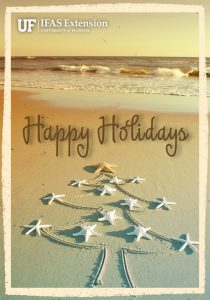
Image credit: UF/IFAS Communications.
By now many of you have already bought and displayed your trees. However, it’s not a bad idea to discuss tree selection for next year. Tree selection is important to maintain tree health and for decorating as branch sturdiness differs among varieties. White pine and red cedar are great choices for the panhandle climate, but have weak branches for hanging ornaments. Firs and spruces are better choices for this, except for our native species that require closer management.
Of course, the most important management measure to keep in mind is moisture level. A hydrated tree will reduce needle drop and keep the tree vibrant green. Don’t forget about the fire hazard a dry tree can cause. Use water holding stands and replenish often, maintaining the water level above the base of the cut tree. Clean water is the best, no additives are needed. It will surprise you how quickly and how much a cut tree will absorb. A good rule of thumb is to have a water basin that will hold approximately 1 quart of water per inch of stem diameter. The proper size stand is important. Make sure it is proportional to your tree size. A potted tree will require approximately a gallon of water a couple of times a week, depending on size. Feel the needles and check the soil for dryness, and add water when needed.
Place your tree in the coolest area of the room. Keep the tree away from air ducts, fireplaces and direct sunlight. However, a tree left in a darkened room will also promote needle drop. A space with indirect sun is best. Any heat from these factors can deteriorate the moisture level needed for a healthy tree.
This is also a popular time of year to travel. Busy with holiday plans, it’s easy to forget about caring for your tree while you are gone. If you are going to travel more than a few days, ask a friend or neighbor to water your tree, but give specific instructions. Remember, moisture is the key. The last thing to do before embarking on your holiday travel is to give your tree water. Be sure the lights are unplugged too.
Safety is the number one priority and should always be on your mind. Start by keeping any open flames or candles far away from the tree. Be careful with strands of lights and inspect before placing on the tree. If the wiring is showing age with cracks in the rubber insulation or the plug is worn, please dispose of them. Be careful not to overload circuit breakers as well. Always turn lights off before you retire for bed.
Take time to properly care for your tree. Your efforts will reward you with a beautiful, festive tree throughout the holiday season. For more information, please contact your local county extension office. Happy Holidays!
Supporting information can be found at the UF/IFAS Family & Consumer Science website: http://solutionsforyourlife.ufl.edu/hot_topics/families_and_consumers/christmas_trees.shtml
by Beth Bolles | Dec 22, 2016
A new tree or shrub is an investment for the future. When we pick an ornamental plant, we have the hope that it will survive for many years and offer seasons of beauty that enhance our landscape. Time is often spent picking a suitable spot, preparing the planting hole, and watering until establishment. We give it the best of care to make certain that our new plant becomes a more or less permanent feature.
With all of our tender love and care for new ornamentals, there is one important practice that we may neglect. Most homeowners purchase plants in containers and it is common to find root balls with circling roots. If any root ball problems are not addressed before installation, the life of your plant may be shorter than you want.
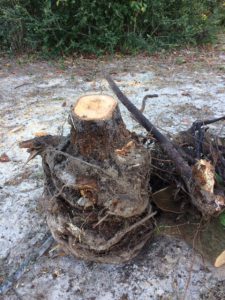
Ten years after installation, this plant was ultimately killed by girdling, circling roots. Photo by Warren Tate, Escambia County Master Gardener.
The best practice for woody ornamentals is to cut any roots that are circling the trunk or container. Homeowners may slice downward through the root ball around the entire plant. For shrubs, it is recommended to shave off “the entire outside periphery of the rootball” to eliminate circling roots. These practices allow the root system to grow outward into new soil and greatly reduce the possibility of girdling roots killing your plants years after establishment.
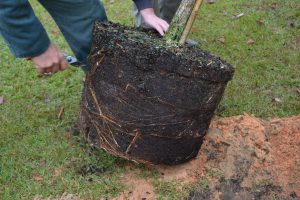
Circling roots are cut before installation. Photo by Beth Bolles, Escambia County Extension.
For more information on shrub establishment, visit the UF Publication Planting Shrubs in the Florida Landscape.
by Sheila Dunning | Dec 7, 2016
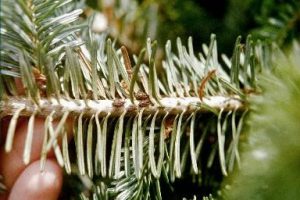 Christmas is coming. So much to do. Picking out the perfect, fresh-cut tree is one of the important
Christmas is coming. So much to do. Picking out the perfect, fresh-cut tree is one of the important 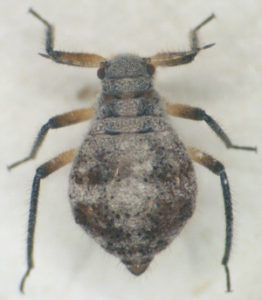 tasks. Every family member has their specific requirement. “It has to be a certain species.” It has to be a specific height and shape.” And, of course, “It has to smell great.” So, a decision is made. The perfect tree is toted home, put up and beautifully decorated. A week later, mom shrieks, “There’s ticks all over the living room!” Don’t panic. Upon inspection, you will discover that the bugs coming from your “perfect” Christmas tree are Cinara aphids.
tasks. Every family member has their specific requirement. “It has to be a certain species.” It has to be a specific height and shape.” And, of course, “It has to smell great.” So, a decision is made. The perfect tree is toted home, put up and beautifully decorated. A week later, mom shrieks, “There’s ticks all over the living room!” Don’t panic. Upon inspection, you will discover that the bugs coming from your “perfect” Christmas tree are Cinara aphids.
Cinara are a group of several species of large brown or black aphids that feed on conifers including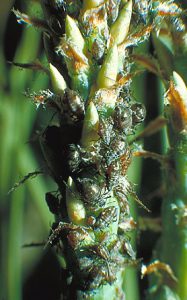 all pines, spruces and firs. When the Christmas trees are cut at the farm and bundled for shipment, the aphids get trapped. With warmer temperatures indoors, the aphids become active. Infestations may also arise from overwintering eggs that hatch. As the tree dries out, the aphids crawl from the tree into the rest of the house.
all pines, spruces and firs. When the Christmas trees are cut at the farm and bundled for shipment, the aphids get trapped. With warmer temperatures indoors, the aphids become active. Infestations may also arise from overwintering eggs that hatch. As the tree dries out, the aphids crawl from the tree into the rest of the house.
No worries. Cinara aphids only feed on conifers, so they pose no threat to other plants. They are not a danger to people or pets either. But don’t get rid of them by smashing them. You may be left with a nasty purple stain to have to clean up. Instead, pull out the vacuum and suck them up.
So, if you are one of those people still shopping for the “perfect” tree, add a preemptive strike to your decorating procedure. Unbundle and shake, shake, shake that tree outside before bringing it in. Then the only shrieking going on will be when mom opens the fabulous present you gave her.
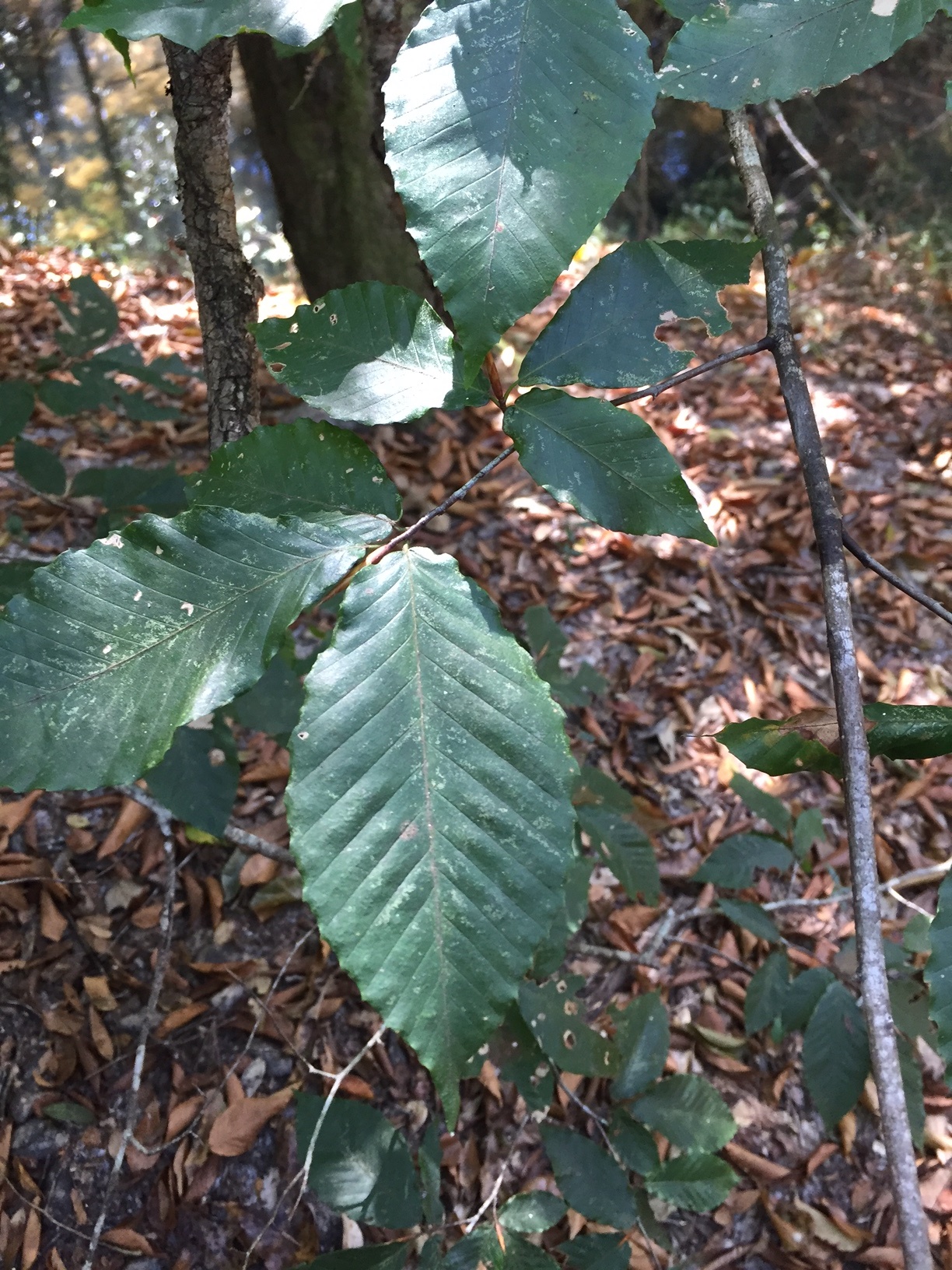
by Carrie Stevenson | Nov 22, 2016
During a recent hike through wooded property in Walton County, our Florida Master Naturalist class came across a stunning example of an American Beech tree (Fagus grandifolia). As we looked closely at its thick, sinewy trunk (often compared to an elephant’s skin), the bark changed hues from a deep red to silvery gray and brown. A hardwood, it has been used over the years to make furniture, railroad ties, and beer barrels. Like many of the local hardwood species, beech wood holds up to decay when exposed to water and early settlers used it to build mills and water wheels.
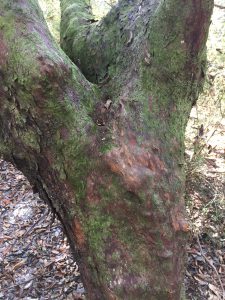
The colorful, smooth bark of a beech tree is eye-catching and strong. Photo credit: Carrie Stevenson
During the growing season, the beech tree can be identified by its distinctive dark green, tooth-edged leaves. Beeches are deciduous but have the unique quality of usually keeping dead leaves on their branches all winter, which also helps with identification in the forest.
The most fascinating observation, to me, was the series of tightly swirled branch buds ready to sprout at the tips of each new branch. So pointed that they’re easily confused as thorns, these long protrusions will eventually grow into new branches.
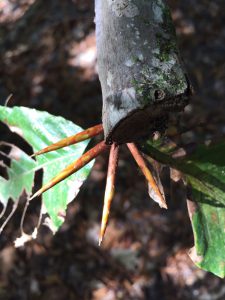
These four buds formed as an “emergency” response to the branch being cut and will eventually replace it. Photo credit: Carrie Stevenson
At the end of one branch that had been cut, the tree’s internal “emergency response” system formed four new immature branches, which had the intimidating appearance of a claw. Eventually, one of these buds will outcompete the others and grow into a new branch.
Beeches are of course known for the beech nut, eaten by humans and wildlife alike. If you’re considering a beech for a home landscape, be sure you have a wide open space with moist soil, as a mature beech can grow up to 75 feet high and 40-60 feet wide. Its low branches create a lot of shade, so understory plants are usually unnecessary or even impossible to grow.
For more information on these interesting native trees and others like it, contact your local UF IFAS Extension Office or visit the UF Landscape Horticulture page.














